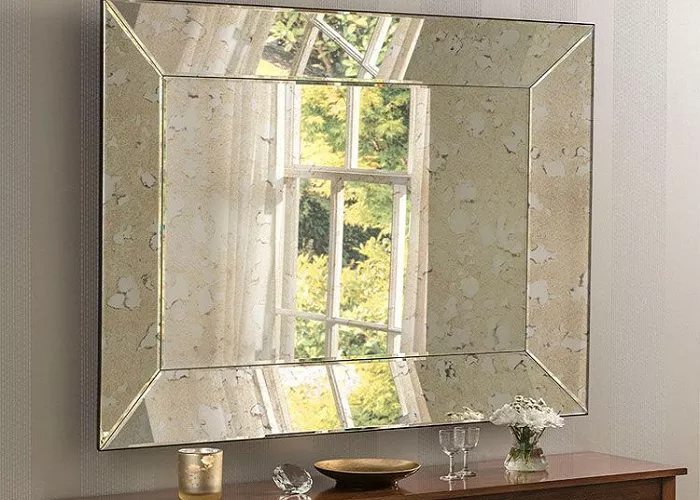Antique mirrors are more than just reflective surfaces; they are historical artifacts that encapsulate the craftsmanship and aesthetic sensibilities of bygone eras. Restoring these mirrors requires a delicate balance between preservation and rejuvenation. This comprehensive guide delves into the meticulous process of restoring antique mirrors, ensuring their historical integrity remains intact while reviving their original splendor.
Understanding Antique Mirrors
Before embarking on restoration, it’s crucial to understand the unique characteristics of antique mirrors. Typically, these mirrors feature:
- Handcrafted Frames: Often made from wood or metal, showcasing intricate carvings or gilded finishes.
- Aged Glass: May exhibit imperfections like bubbles, waves, or a slight tint, indicative of historical glass-making techniques.
- Silvering: The reflective coating, usually silver or mercury, applied to the back of the glass, which can deteriorate over time.
Identifying these elements helps in formulating an appropriate restoration strategy.
Assessing the Mirror’s Condition
A thorough assessment is the cornerstone of any restoration project. Examine the mirror for:
- Structural Integrity: Check for cracks, chips, or loose joints in the frame.
- Silvering Deterioration: Look for dark spots or cloudiness, commonly referred to as “foxing.”
- Surface Grime: Accumulated dirt or residue that obscures the mirror’s clarity.
Documenting these issues provides a roadmap for the restoration process.
Cleaning the Mirror
Cleaning is a delicate task that, if done improperly, can cause irreversible damage.
Cleaning the Glass
Use a soft, lint-free cloth slightly dampened with distilled water. Gently wipe the surface, avoiding excessive pressure. For stubborn spots, a mild solution of water and a few drops of dish soap can be used. Never apply the solution directly to the glass; instead, dampen the cloth and then clean.
Cleaning the Frame
The frame’s material dictates the cleaning method:
- Wooden Frames: Dust with a soft brush. For grime, use a cloth dampened with a mixture of water and mild soap. Avoid soaking the wood.
- Gilded Frames: Dust gently with a soft brush. Avoid any liquid cleaners as they can damage the delicate gilding.
- Metal Frames: Use a soft cloth with a mild cleaner suitable for the specific metal type.
Addressing Silvering Issues
Silvering deterioration is common in antique mirrors. Options include:
- Preservation: Embrace the aged look, which adds character and authenticity.
- Re-silvering: A complex process involving the removal of the old silver layer and application of a new one. This should be undertaken by professionals to ensure historical accuracy.
For minor silvering issues, some restorers use aluminum foil or reflective paint on the back to mask imperfections, though this is a temporary solution.
Repairing the Frame
Frame restoration involves:
- Structural Repairs: Re-gluing loose joints and filling cracks with appropriate wood fillers.
- Surface Restoration: Sanding and refinishing to match the original appearance. For gilded frames, re-gilding may be necessary, which involves applying gold leaf and can be intricate work.
It’s essential to match the materials and techniques used in the original frame to maintain authenticity.
Protective Measures Post-Restoration
After restoration, implement measures to preserve the mirror:
- Placement: Avoid areas with high humidity or direct sunlight, which can accelerate deterioration.
- Regular Maintenance: Dust regularly and clean as needed using the methods outlined above.
- Protective Backing: Consider adding a protective backing to shield the silvering from environmental factors.
Valuing Restored Antique Mirrors
Restoration can enhance the value of antique mirrors if done correctly. It’s advisable to consult with experts or refer to resources like Antique Mirrors Value to understand the market and ensure that restoration efforts align with preserving or enhancing the mirror’s worth.
Conclusion
Restoring antique mirrors is a meticulous process that, when executed with care and respect for the original craftsmanship, breathes new life into these historical pieces. By understanding the materials and techniques involved, and by taking deliberate steps in cleaning, repairing, and preserving, one can ensure that antique mirrors continue to reflect not just images, but the rich history they embody.
For those interested in exploring more about antiques, Rare Antiques offers a wealth of information and resources. Additionally, staying informed about the Antique Market can provide insights into current trends and valuations.

